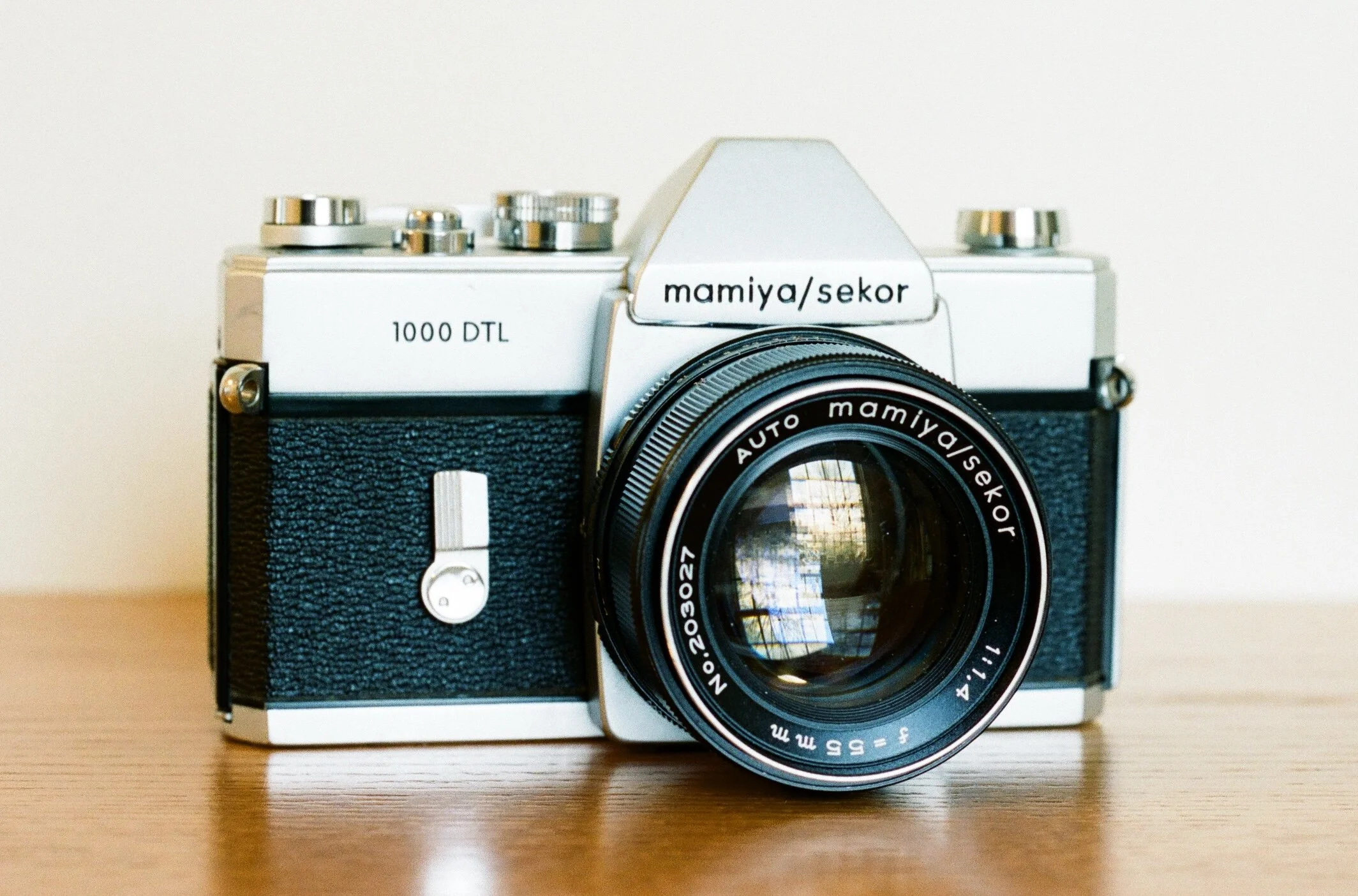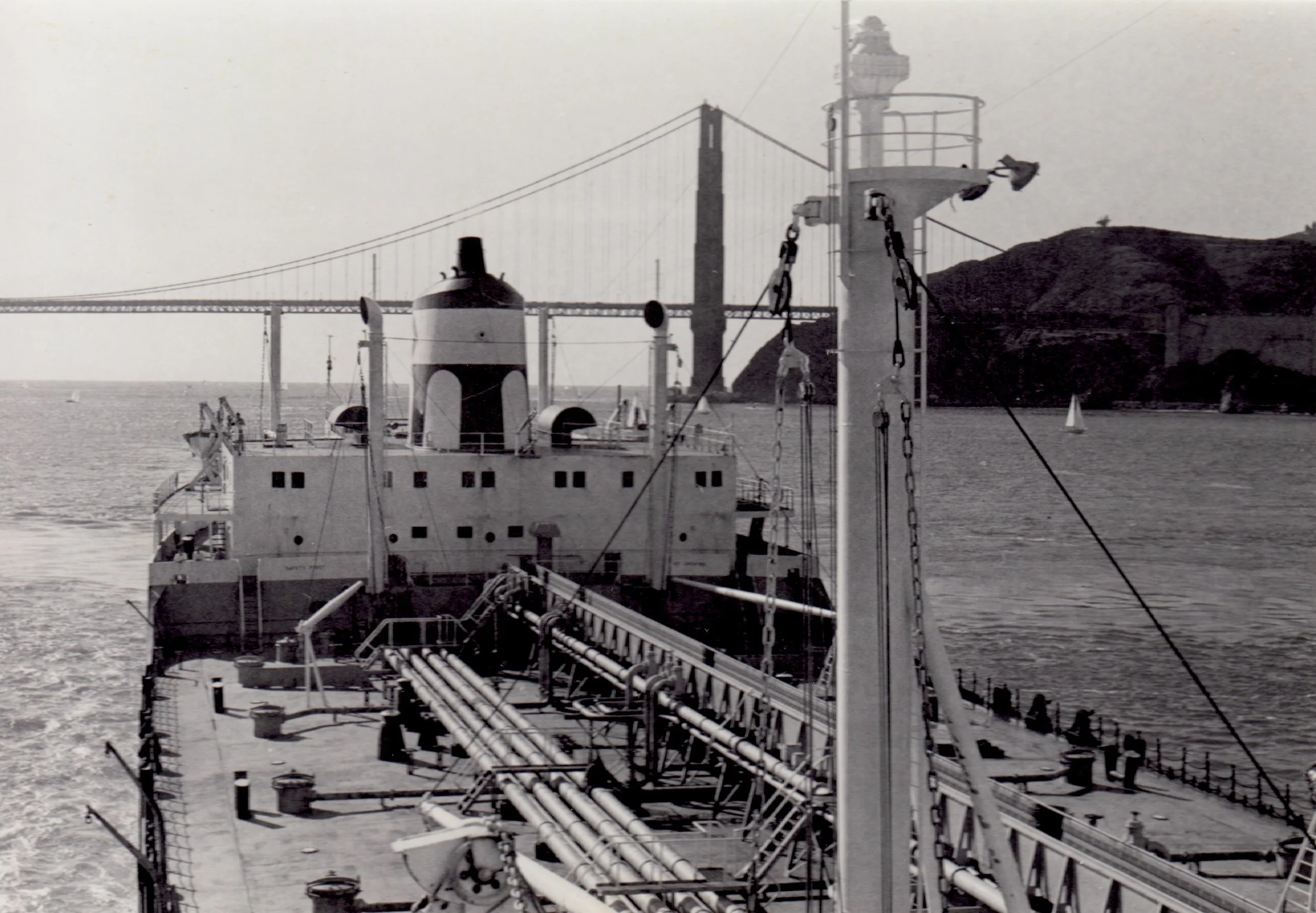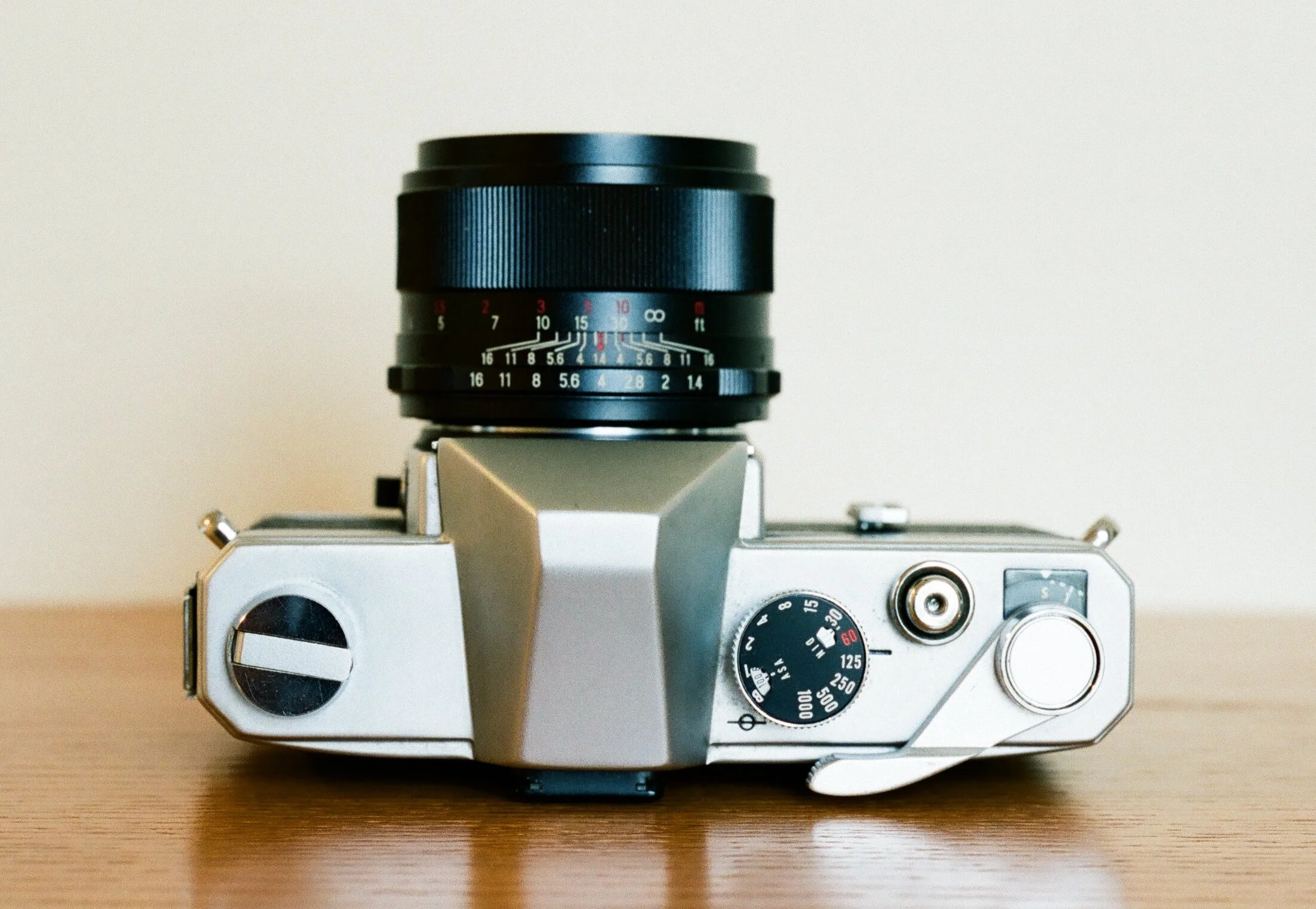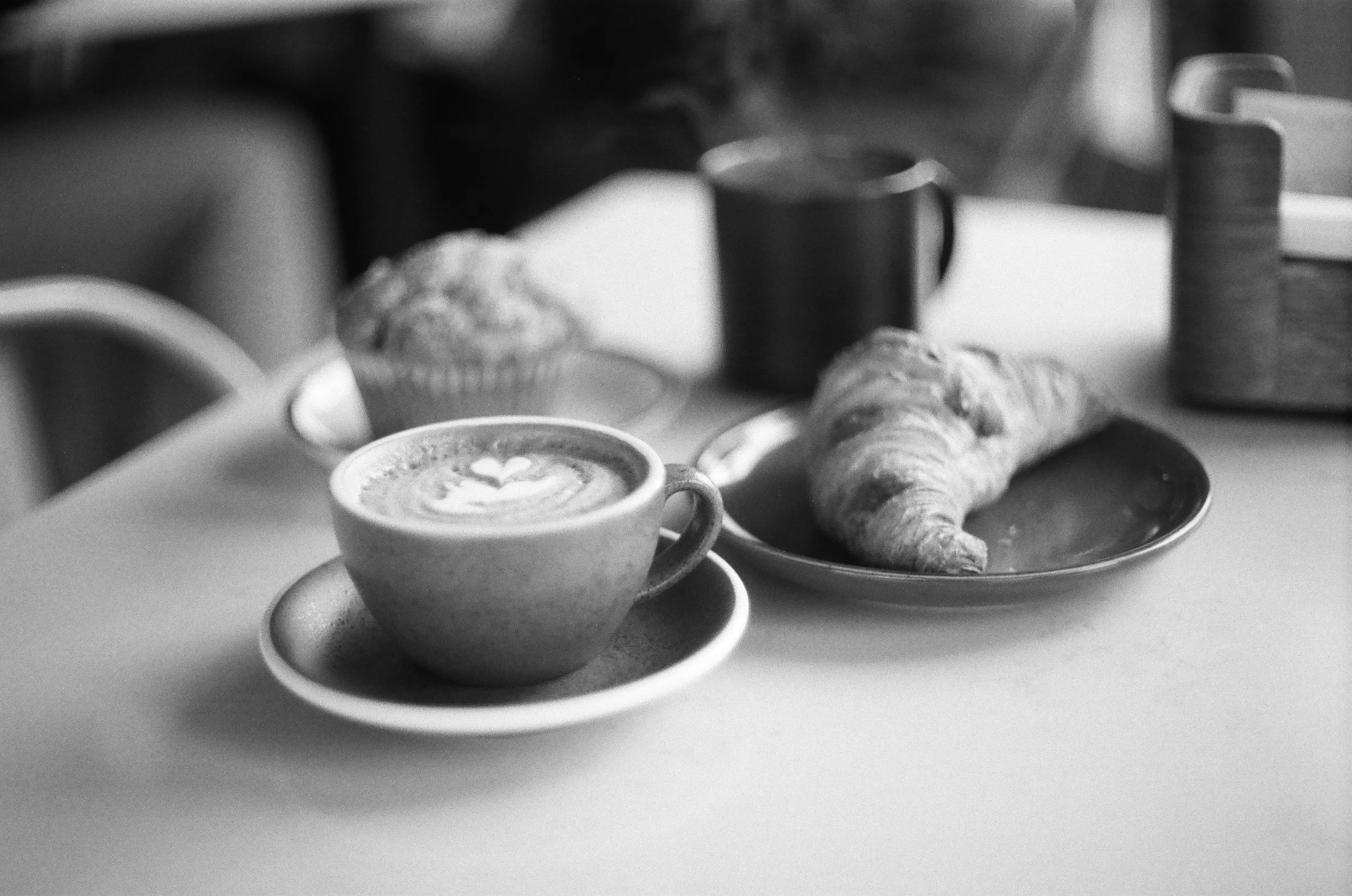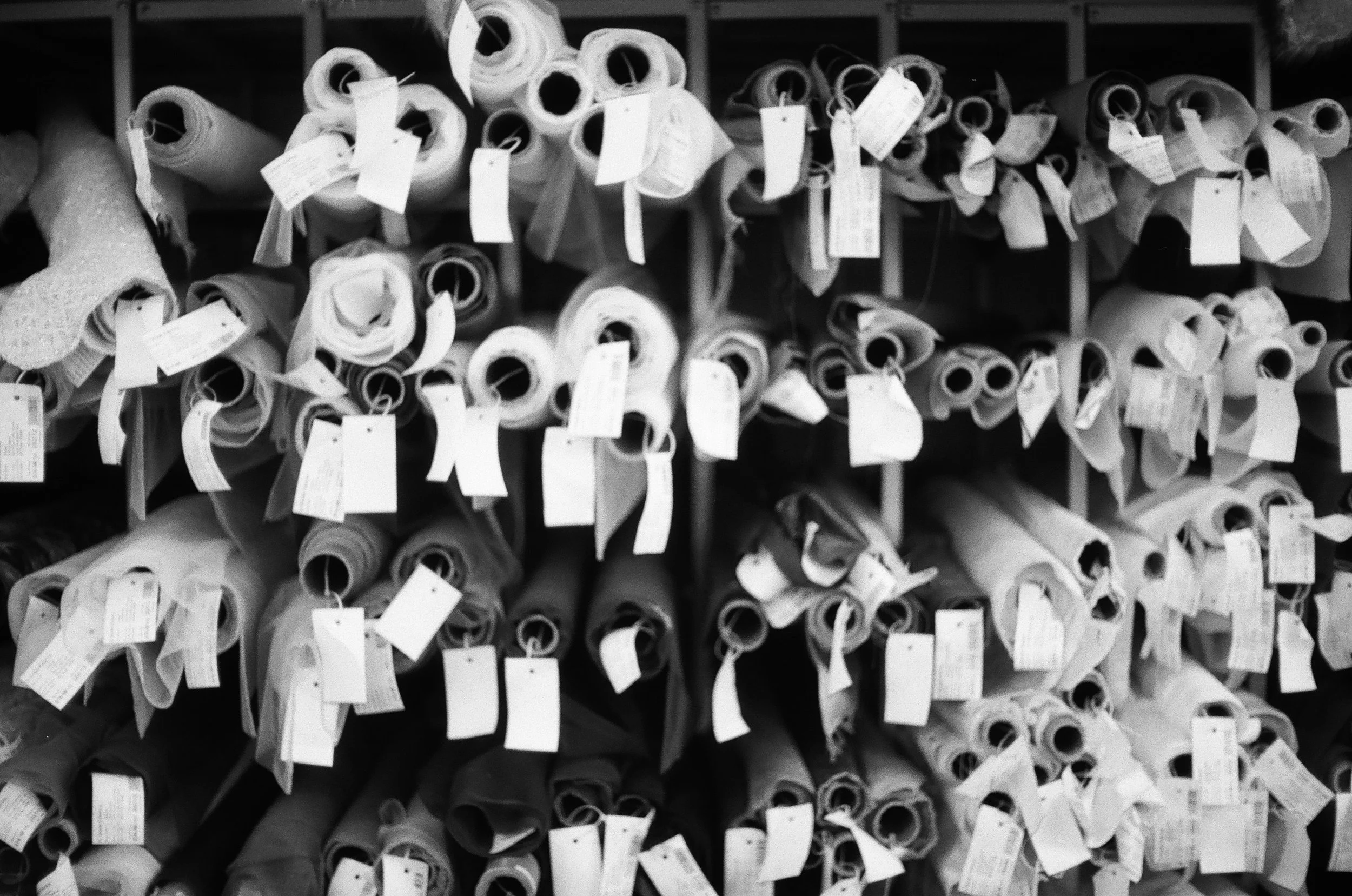Mamiya/Sekor 1000 DTL
My first 35mm single lens reflex camera.
Mamiya/Sekor 1000 DTL with 55mm f/1.4 Mamiya/Sekor. (Color photos of the camera were made with a Nikon F, 55mm f/3.5 Micro-Nikkor-P.C, and Portra 400.)
Looking back at the Golden Gate Bridge, having just entered San Francisco Bay Mamiya/Sekor 1000 DTL, 55mm f/1.4 Mamiya/Sekor, Tri-X, 1978.
My introduction to SLR photography
The Mamiya/Sekor 1000 DTL sold well in the late 1960s to early 70s, and it was my introduction to the 35mm SLR world. It has an M42 screw mount like a Pentax Spotmatic but it seems not all Spotmatic lenses will fit (see the Spotmatic article).
Gongfu tea Silver Spring, Md. Mamiya/Sekor 1000 DTL, 55mm f/1.4 Mamiya/Sekor, FP4+, 2023,
Mamiya/Sekor 1000 DTL with 55mm f/1.4 Mamiya/Sekor.
Design
This camera is large and heavy, about like a Nikkormat. The design is plain and clean. I like how the winding lever is sculpted to blend in with the crease along the back of the top deck.
Java Nation Rockville, Md. Mamiya/Sekor 1000 DTL, 55mm f/1.4 Mamiya/Sekor, FP4+, 2023.
Spot meter + averaging meter
In the 1960s and 70s there were a lot of Japanese 35mm SLRs on the market. This one achieved product differentiation by having a dual metering system: both spot and average metering. You select S or A with a two-position tab. This was an unusual feature.
How does it work?
The metering system is accurate and it works today because it is driven by a readily available 1.5V silver oxide battery instead of the obsolete 1.35V mercury battery used in many other 1960s Japanese SLRs including the Nikon F and the Pentax Spotmatic.
In former times Kodachrome 64 was my main ‘go to’ film stock and i put a lot of it through this camera. That film had a narrow exposure latitude, but the Mamiya’s metering handled it well. Sadly, Kodachrome is no longer in production (see References). Today I am a b&w specialist and I usually rely on a hand held meter or the sunny 16 rule.
G Street Fabrics Rockville, Md. Mamiya/Sekor 1000 DTL, 55mm f/1.4 Mamiya/Sekor, FP4+, 2023.
Using the Mamiya 1000 DTL
This camera has a nice solid feel. Compared to the 1960s/70s Japanese SLR norm, film advance is smoother. On the down side, focusing is not so easy in dim light because there is no split image and the ‘micro diaprism focusing grid’ in the center of the finder is not so distinct.
Maintenance and repair
No maintenance yet. The door hinge light seal is deteriorated but it’s not shedding debris nor it it causing light leaks, so I’m ignoring it.
References / further reading
Camera manual: orphancameras.com
More references:
McKeown, J.M. and J.C. 1996. McKeown’s Price Guide to Antique and Classic Cameras, 1997-1998. Grantsburg, Wis.: Centennial Photo.
National Geographic News Room. 2009 (June 24th). The End of Kodachrome. Washington, D.C. https://news.nationalgeographic.org/the-end-of-kodachrome/ accessed August. 21, 2025.
National Public Radio. 2009 (June 23rd). Kodak Retires Kodachrome After 74 Years. https://www.npr.org/2009/06/23/105797026/kodak-retires-kodachrome-after-74-years accessed August. 21, 2025.
“Kodachrome was the world's first commercially successful color film, was used in both still cameras and on movie sets. And Kodachrome really captured some of the most iconic images in recent memory. A roll of eight millimeter Kodachrome was in Abraham Zapruder's camera when he recorded the assassination of President Kennedy. Photojournalist Steve McCurry also used this kind of film to bring out the startling green of an Afghan girl's eyes.”
Farmland Dickerson, Md. Mamiya/Sekor 1000 DTL, 55mm f/1.4 Mamiya/Sekor, FP4+, 2023.
